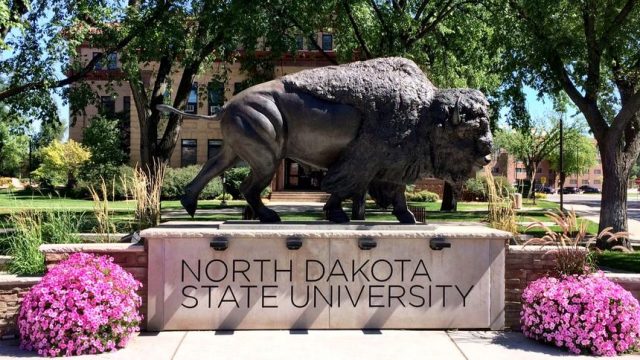Enrollment Numbers Are the Wrong Metric by Which to Measure Higher Education Success

News from North Dakota’s two largest universities – UND in Grand Forks and NDSU in Fargo – is that fall enrollment is down this year.
Based on preliminary numbers, NDSU is seeing a drop of about 700 students while UND’s enrollment has dropped by about 500.
Those might seem like big drops at first blush, and I’m sure there will be some panic in certain circles (more on that in a moment), but let’s get some context. While the enrollment at these schools is diminished, it’s also not outside of historical norms as this chart showing fall enrollment at the two schools going back to 2005 illustrates:

The fall enrollment for both schools is just slightly lower than their averages for all years since 2005. Given that it’s been some tough sledding for the universities in terms of their budgets – they saw a massive (and irresponsible, in this observer’s opinion) build-up of funding during the oil boom years only to see it slashed when commodity prices came back to earth – these enrollment numbers aren’t as bad as they probably could have been.
Really, though, enrollment is a terrible metric by which to measure the health or success of a public university.
Many disagree, though usually those people represent off-campus interests. The communities around these campuses like big enrollment numbers. The influx of students in the fall brings with it a lot of commerce. Apartments get rented. Pizzas get ordered. Stores see their aisles full of students and parents in need of supplies.
More students means more of all of those things.
But public institutions of higher education weren’t built to generate commerce. Their missions are not economic development. Their goals are research and education, with the latter being the goal most important to students.
Enrollment numbers can tell us that a lot of students are choosing a given institution, but they tell us very little about how well that student is served by the institution.
Far more important are metrics like completion rates.
On Twitter recently I poked some fun at the University of North Dakota for a post they made assuming the graduation date of their incoming class of freshman. I was being sarcastic, but the truth is only about a quarter of those students will graduate from UND in four years. Only about half will graduate, with a four year degree, after six years.
Well, given that the four-year graduation rate at ND's research institutions is about 25 percent, "UND class of 2023 or maybe 2024 and maybe even 2025" is probably more accurate. #NDPol https://t.co/Cd2wAjp0td
— Rob Port (@robport) August 20, 2018
The point I’m trying to make is that serving the students, ensuring worthwhile academic outcomes for them, is far more important than the number of students we pack onto a campus in a given year.
Which isn’t so say that enrollment is never a worthwhile goal. There’s just a right and a wrong way to pursue it.
When NDSU President Dean Bresciani made a characteristically brash pronouncement in 2015 that he’d take his school to an enrollment of 18,000 students he had the wrong motivations. Bresciani set out to pursue enrollment growth for the sake of enrollment growth (since he made the announcement NDSU fall enrollment is down more than 10 percent).
But if campus leaders like Bresciani switched focus to retention and completions they could grow enrollment simply by slowing attrition. Fewer dropouts, fewer transfers to other schools, means more students at NDSU.
The public should care far more about how many students are graduating from institutions like NDSU and UND than how many students are enrolling.




